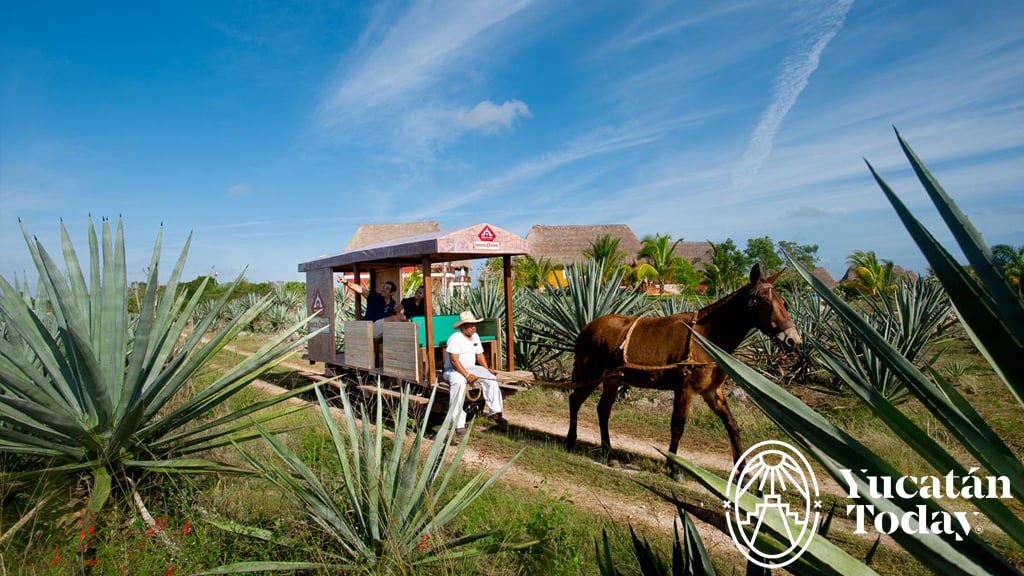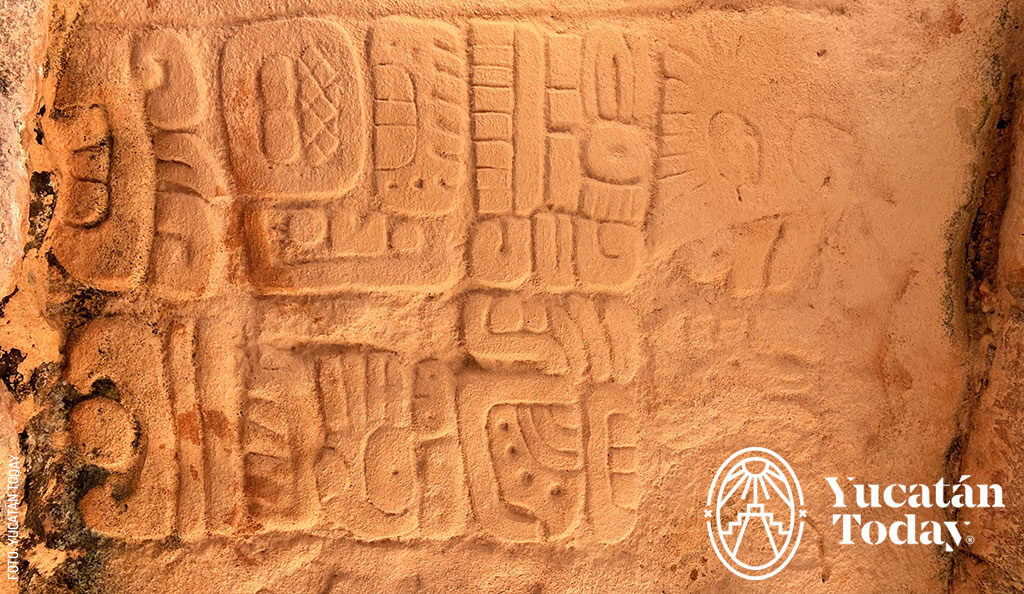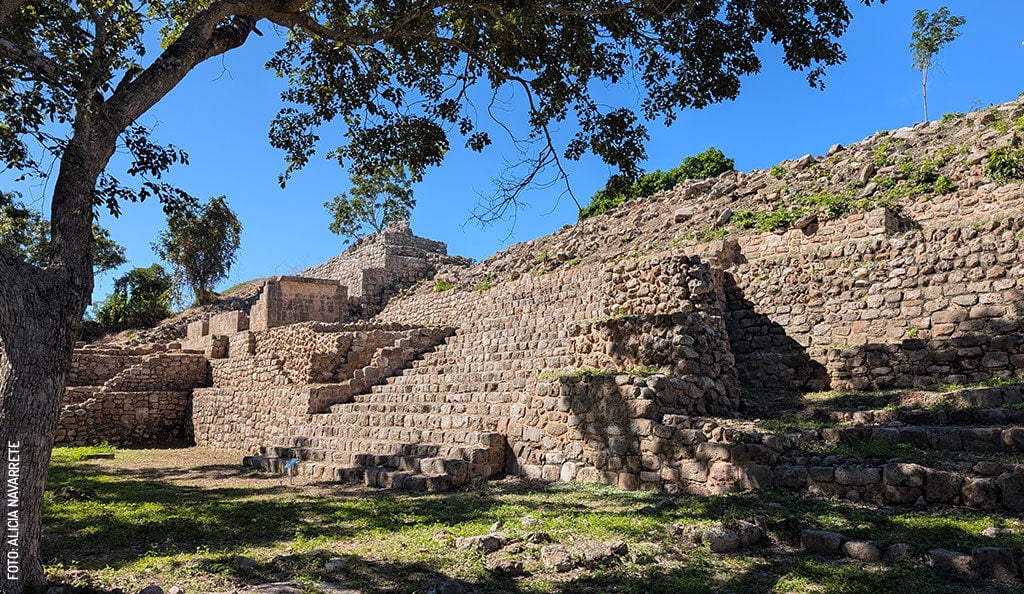
Oxkintok
Before Chichén Itzá, there was Uxmal. Before Uxmal, there was Oxkintok. This pre-Hispanic city might just be one of Yucatán’s best-kept secrets. Unknown to the vast majority of travelers, both international and local, Oxkintok is located just minutes from the town of Maxcanú, near the border where Yucatán gives way to Campeche.
A look into Oxkintok’s history
The first signs of occupation in Oxkintok date back to around 500 BC. Its strategic location at the gateway to the Península quickly elevated its importance, making it one of the most significant Maya capitals along trade routes connecting both the cultures of central México and the Maya of the Guatemalan Petén.
Why is Oxkintok worth visiting?
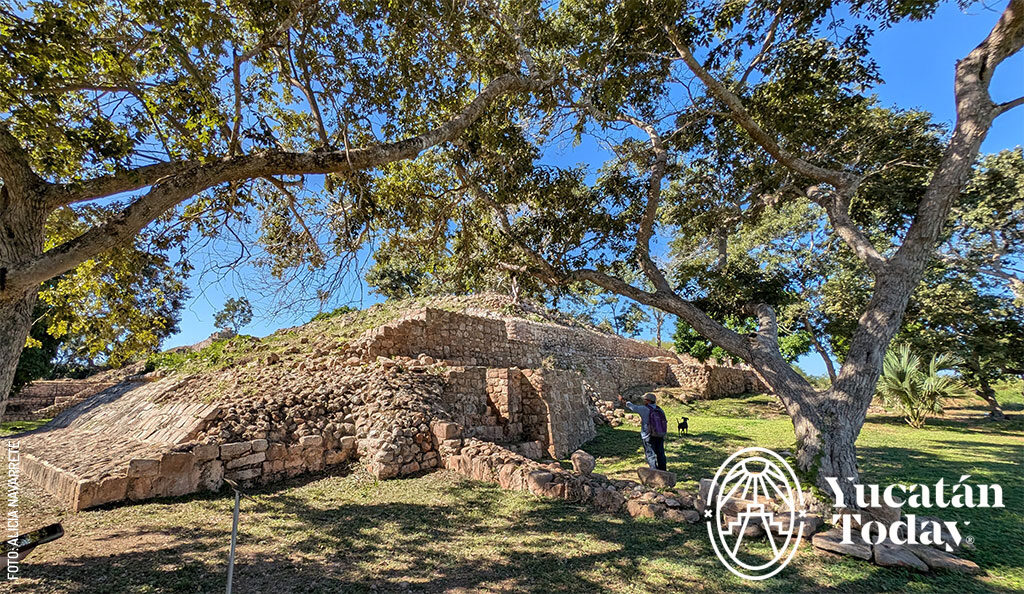
Oxkintok has many reasons to boast. One is its size—the protected area covers more than 950 hectares (2,348 acres), with at least 39 identified structure groups. Another highlight is its Grand Ballgame court; though much smaller than the ones at Uxmal or Chichén Itzá, it is one of the oldest known Maya Grand Ballgame courts.
The buildings in Oxkintok are quite different from those found along the Puuc Route. Since Oxkintok is older, it developed its own architectural style (Early Oxkintok and later Regional Oxkintok), which eventually evolved into what is now known as Proto-Puuc. You'll only find one building resembling the style seen in the rest of the Puuc Route—very horizontal with some cylindrical decorations. The site also features several examples of false or Maya arches built using different construction techniques.
There are plenty of fascinating buildings to see in Oxkintok. You’ll likely spot several that immediately catch your eye, but I’d like to highlight a few you might overlook. One of the first you’ll encounter on your visit is the Labyrinth or Satunsat.
Satunsat or The Labyrinth of Oxkintok
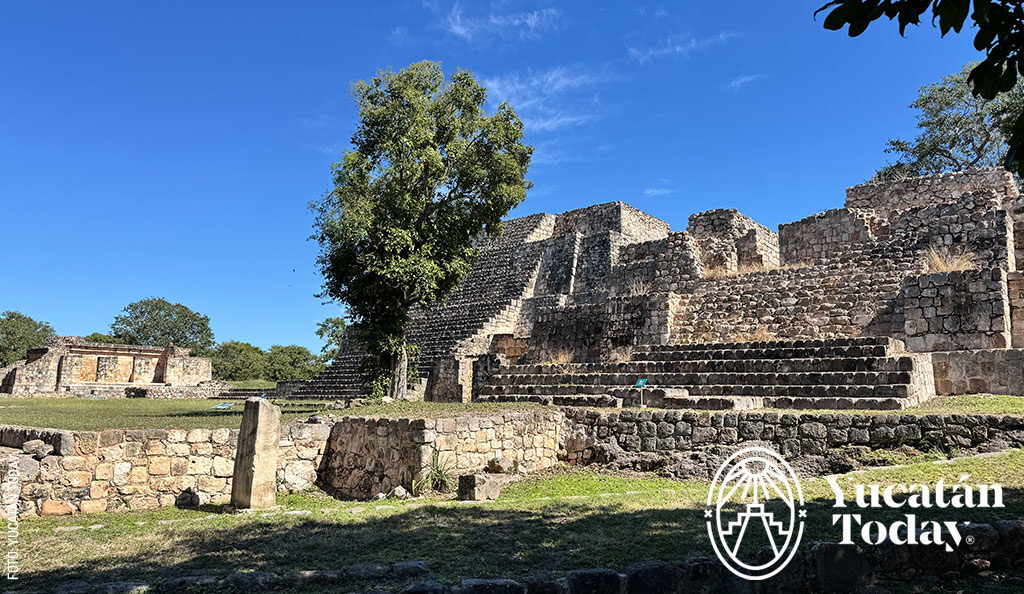
The Satunsat (also known as Tzat Tun Tzat in some sources) is a three-level structure, with the lower level being a labyrinth. Its name is interpreted as “place to get lost” (saat means to get lost in Maya). From a distance, it may not seem particularly remarkable, but take a closer look and you’ll notice small square openings (about 20 cm or 8 inches wide) on its walls. Their exact purpose remains unknown, but they may have been used for light, ventilation, or possibly even astronomical observations. Use your phone’s flashlight to see how thick the Satunsat’s walls are. If you want to find the only entrance, look towards what now appears to be the back of the structure, facing away from the orientation of the other buildings.
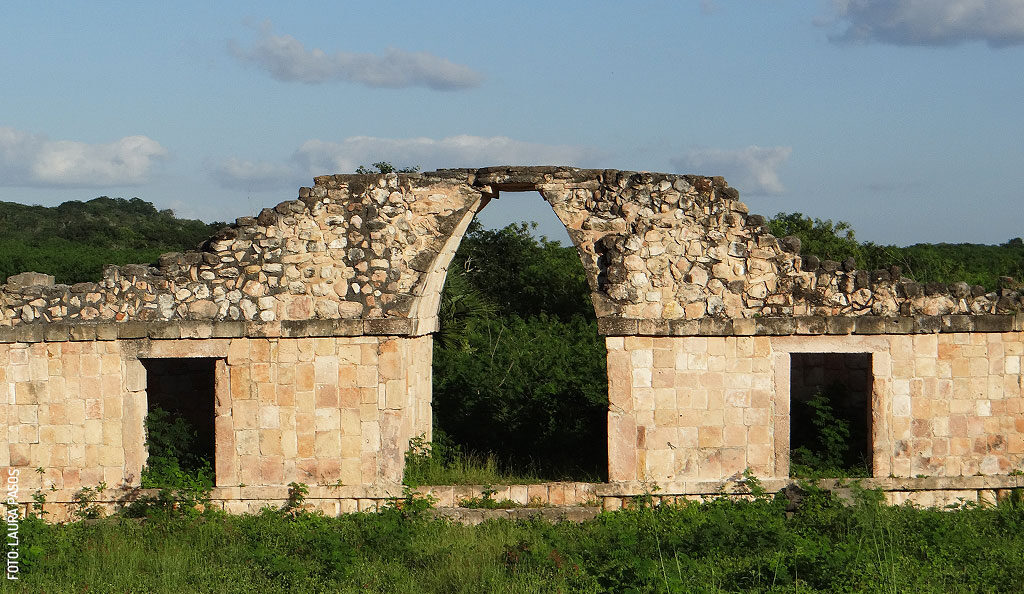
According to oral tradition passed down by Maya priests (j-meen), Oxkintok, and specifically the Satunsat, was a place where j-meenes received sacred healing knowledge from ancient guardian spirits. This has led researchers to believe that navigating the Satunsat labyrinth—in complete darkness, surrounded by oppressively thick walls, and following a seemingly random placement of entrances and exits—may have been a rite of passage for aspiring j-meenes.
The three-level structure of the Satunsat was likely highly symbolic. The labyrinth on the lower level represented the underworld, the more structured second level symbolized the physical world, and the third level referred to what we now call the sky or heavens.
East Plaza: Ch’ich Palace & the Devil’s Palace
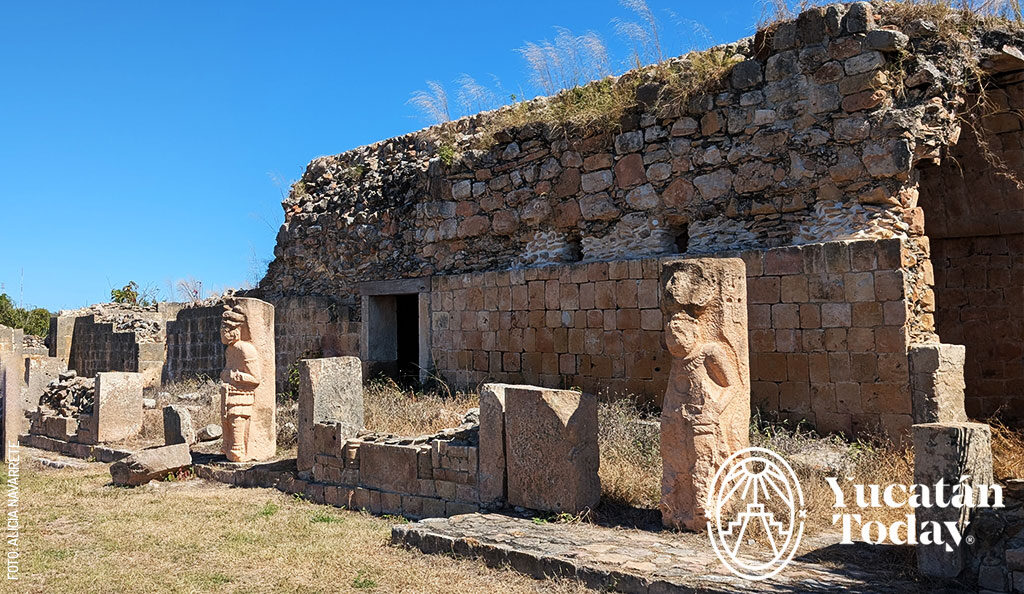
These two adjacent plazas hold some surprises that may not be obvious at first glance. In the East Plaza, for example, several stelae depict different figures. The most eye-catching is likely the first one on the left, located in the Ch’ich Palace, as it is better preserved than the others. Some believe it represents Ixchel, the Maya goddess of fertility and medicine. The second stela, however, is thought to depict a powerful ruler known as Walas, frequently mentioned in inscriptions at the site. Look closely and see if you can spot his deer-shaped headdress, the place where his spear would have been shown in his left hand, and the serpent descending at his side.
To the left of the Ch’ich Palace, you’ll find the so-called "Devil’s Palace." This eerie name comes from a figure carved on a column that was once located at the building’s entrance. Notice the two holes on either side of its head—at some point, researchers speculated that these may have been used to attach horns to the figure, but no evidence has been found to support this theory. Pay attention to its distinctive features: large, hollow eyes, squared ears, an elongated face, and a cavity in its abdomen, where a jade piece may have once been placed.
How much time should you spend at Oxkintok?
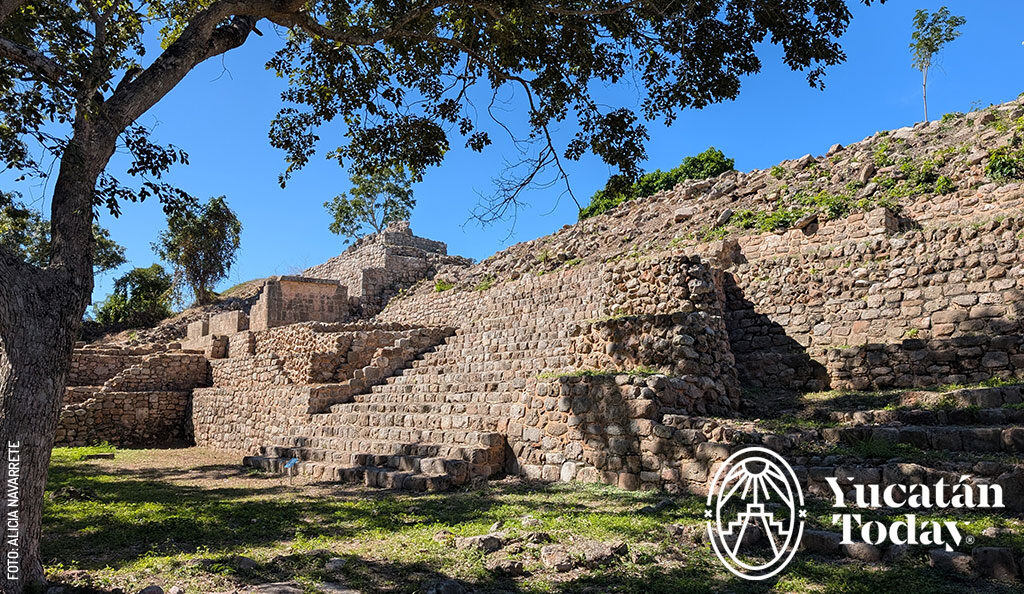
If you’re exploring on your own, keep your eyes open at all times—Oxkintok is full of hidden details that aren’t immediately obvious, such as original flooring and carved stones that have yet to be restored. If possible, consider hiring a guide in advance to enhance your experience. One excellent option is Víctor Chim Vergara, a certified local guide from Maxcanú, who has been involved with Oxkintok (and the nearby Aktun Usil cave) for decades. Víctor’s tours are enriched by his extensive knowledge of the site, drawn both from his own life experience and detailed research from multiple sources. His passion for the area is contagious, making for an unforgettable visit.
To book a tour with Víctor, contact him at Tel. +52 997 113 3910.
General information about Oxkinkok:
- Meaning of “Oxkintok” in Maya: Its exact meaning is unknown, but the current hypothesis suggests “the city of the three flint suns.”
- Period of occupation: 500 BC – 1500 AD (Late Preclassic to Late Postclassic)
- Peak period: 300 – 550 AD (Classic Period)
- General admission fee: $75 pesos (2025)
- Services: Bathrooms
- Nearest city: Maxcanú
- Nearby Sites & Activities:
- Visit the Aktun Usil caves – While not officially recognized as an archaeological site, they contain significant archaeological remains, including stone engravings, bone and ceramic fragments, and cave paintings. A guide is required; contact Víctor Chim (WA +52 997 113 3910) or Lourdes Canché (WA +52 999 214 1342).
- Have lunch at the Ya’axche Ethnogastronomic Center, where you can enjoy an outstanding Yucatecan meal or even learn how to prepare it from scratch.
- A fun fact about Oxkintok: Just like in Dzibilchaltún, during the equinoxes (March and September), the sun rises through the structure in the Arch Plaza, perfectly aligning with its center.
References and recommended reading
Rivera Dorado, M., & Amador Naranjo, A. (1994). El laberinto de Oxkintok. En J. P. Laporte & H. Escobedo (Eds.), VII Simposio de Investigaciones Arqueológicas en Guatemala, 1993 (pp. 600-606). Museo Nacional de Arqueología y Etnología. Retrieved from the Tikal Association website in January 2025. https://www.asociaciontikal.com
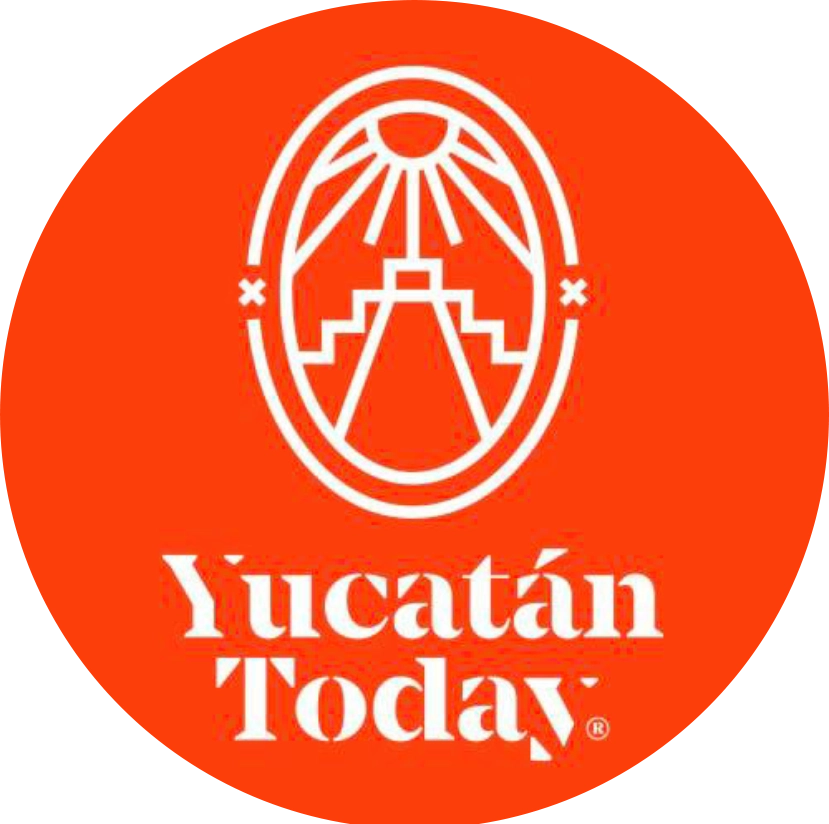
Author: Yucatán Today
Yucatán Today, the traveler's companion, has been covering Yucatán’s destinations, culture, gastronomy, and things to do for 37 years. Available in English and Spanish, it’s been featured in countless travel guides due to the quality of its content.
¿Enamorado de Yucatán? Recibe en tu correo lo mejor de Yucatán Today.
No te pierdas nuestros mejores artículos y la edición digital cada mes antes que nadie.
Related articles
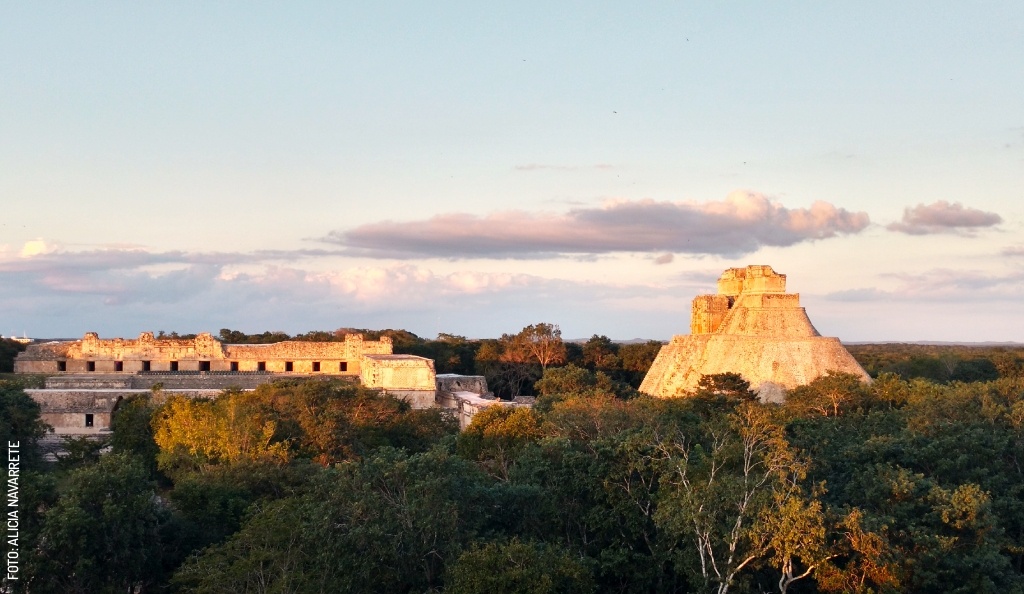
A Getaway to Uxmal and its surroundings in two days
Explore Uxmal & the Puuc Route: Mayan wonders, Choco-Story, and Luis May's Mayan blue. 1-2 day Yucatan itinerary. #Uxmal #RutaPuuc #MayanRuins...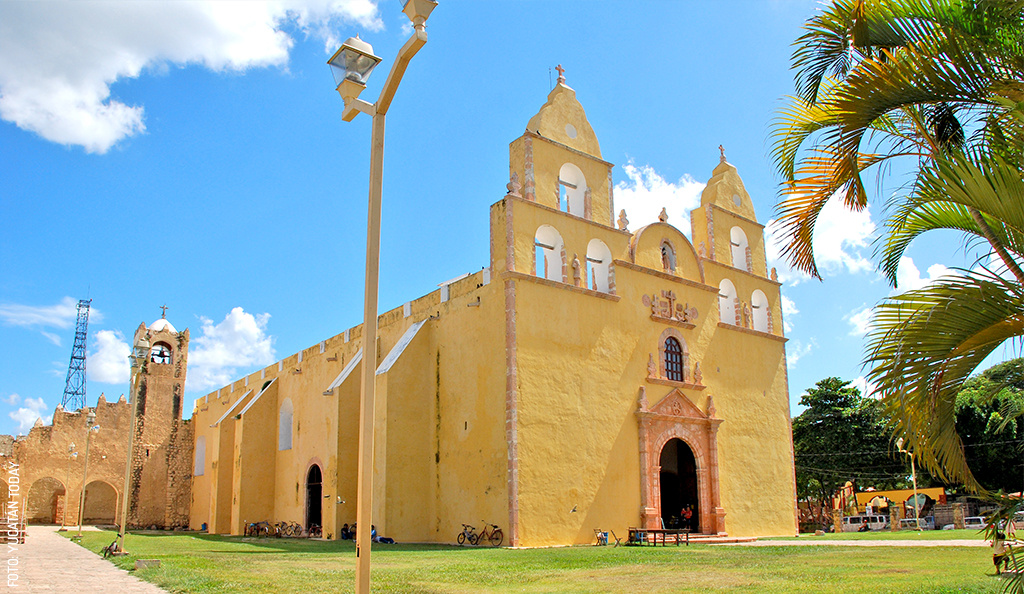
Oxkutzcab
Explore the charming town of Oxkutzcab in Yucatán, Mexico, a perfect base for exploring the Ruta de Conventos and Ruta Puuc.